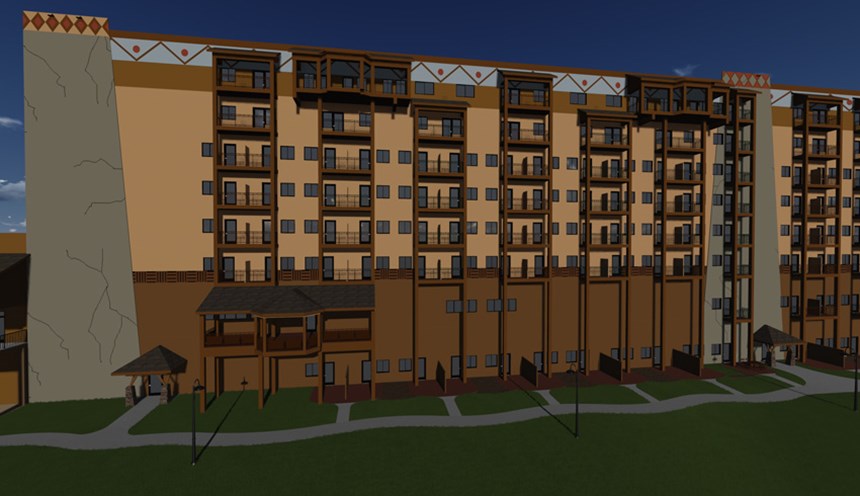Structural
The main structural system used in this building is masonry shear walls and precast planks. There are also concrete piers, spread and strip footings, walls and masonry walls in the foundation and steel framing system in areas that require more flexible open spaces. The roof system is also precast hollow core planks.
There are two different thickness of precast planks. As shown in figure 8, there is 10” and 12” thick precast planks. 10” thick planks are mostly used almost throughout the building typically spanning 28’, except the corner with bigger suite which required longer span of 40’ in one side where balconies are. The balcony is also precast but solid plank that is 1’-½” thick which is supported by 1’ x 1’ precast columns at each exterior corner.
The main lateral force resisting system for Hakuna Resort consists of fully grouted 12” thick masonry walls. These masonry blocks are structured to have masonry piers at each ends and sometimes in the middle as well to eliminate usage of columns. The masonry pier schedule can be found in figure 10. The blocks have F’m of 2000 psi which requires a net area compressive strength of 2800 psi and grouted with 3000 psi grout.
Mechanical
The AHU operate with a Variable Air Volume System that has hook ups in the primary spaces, allowing the end user to monitor each space. A building automation system is provided to monitor various mechanical points throughout the building.
Lighting
Throughout the building there are different types of spaces, having different lighting needs; public service spaces, private hotel rooms, and lobby area. The public service lighting with occupancy sensors is a florescent lighting system Compact florescent down lights and line voltage halogen continuous run wall graze luminaries to provide uniform grazing on the vertical surface in the corridor.
Electrical
The primary feed is 208Y/120V system for general use and 480Y/277 for lighting. Uninterruptible Power Supply systems are located on various floors. Emergency power systems were designed for the building to provides unit erupted power
Construction
The site is located on fill, for the foundation to meet proper bearing capacity, Geopiers under the footers were used where the soil did not meet 95% compaction.
Fire protection
The Building is equipped with a typical automatic wet sprinkler system. 2 hour fire ratings are provided for all exterior walls and exit stairways. The structural system must meet a 2 hour fire rating.
Transportation
There are 2 elevator banks that house a total of thirteen elevators.

